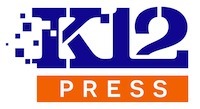A K-12 school district’s website serves as the central hub for engaging with students, parents, and staff. It’s more than just a digital face for the district; it’s a dynamic platform that must comply with specific federal and state mandates to ensure accessibility, transparency, and effective communication. This article outlines the federal standards and requirements for school district websites, emphasizing the importance of ADA compliance.
Mandatory Federal Requirements for School District Websites:
- Transparency and Information Accessibility: Under the Freedom of Information Act (FOIA), school websites are required to provide easy access to information about policies, procedures, and records, ensuring transparency and accountability to the public. More details on FOIA requirements can be found on the Department of Justice website.
- ADA Compliance and Web Accessibility: The Americans with Disabilities Act (ADA) mandates that school websites must be accessible to individuals with disabilities. This includes ensuring proper color contrast, text alternatives for images, video captions, accessible online forms, and keyboard navigation. The ADA’s general requirements and the Department of Justice’s stance on web accessibility provide valuable guidance for compliance.
- Content Quality: In line with the Plain Writing Act of 2010, all web content must be written in a clear, concise, and well-organized manner. This is essential to ensure that information is easily understandable and usable by the public. You can learn more about the act and find resources on plainlanguage.gov.
- Mobile Accessibility: With the increasing use of smartphones, it’s vital to make school websites accessible and navigable on mobile devices. This aligns with the Connected Government Act, which you can explore here.
- Multilingual Access: Schools are required to provide language access services to individuals with limited English proficiency under Executive Order 13166. This enhances inclusivity and ensures that all members of the community can access important information. Guidance on this can be found at LEP.gov.
Web Accessibility Basics:
Every school district should ensure its website meets these key accessibility basics:
- Accessibility Statement: A clear statement of the website’s accessibility goals and standards, such as WCAG, demonstrates commitment to inclusivity.
- Alt Text for Images: Providing text alternatives for visual content is crucial so that all users, regardless of their ability to see images, can understand their content and purpose.
- Hyperlink Clarity: Links should be clear and distinct, with color contrast compliance and keyboard accessibility.
- Proper Headings: Use headings for structure, not design, to aid navigation, especially for assistive technology users.
- Color Contrast: Ensure text and background have sufficient contrast for readability. Tools like the a11y® Color Contrast Accessibility Validator can assist in this evaluation.
A compliant school website not only fulfills legal requirements but also reinforces a district’s dedication to providing an equitable and effective online presence for its community. By adhering to these standards, your school can offer a more accessible and user-friendly experience, laying a solid foundation for digital inclusivity. Should you require assistance or further guidance, resources are available at ADA.gov and Web Content Accessibility Guidelines (WCAG).
At K12Press, we understand the importance of these values and provide a range of services to assist schools in this endeavor. From building compliant school district websites to conducting FREE ADA compliance audits, our tools and expertise are tailored to support the unique needs of educational institutions. By partnering with K12Press, you can ensure that your school district’s website not only meets but exceeds federal requirements and best practices for digital accessibility.














